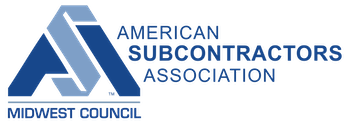Safety Newsletter – November, 2013
Does your company utilize a Daily Task Hazard Analysis Form?
By Mike Sicking, Safety International
Many larger construction projects are requiring their subcontractors to utilize a Daily Task Hazard Analysis Form. Although it is viewed by many as just another worthless piece of paperwork to be completed, used properly this can be an invaluable tool and money saver for the subcontractor.
Everybody in the construction field has a tendency to focus on the hard dollars of a project such as labor hours and material expense. Often overlooked is the internal cost control of poor daily planning and injury related expenses. It should also be noted that your Insurance company and corporate lawyer will love you for using and permanantly documenting this form for future use.
I am working with several companies who use different variations of this form and I have designed several types to meet their specific needs. The underlying factor that they all share is that it aids the foreman in the pre-planning process. A good task hazard analysis will share these basic components.
1. A jobsite visual inspection for safety hazards before the work shift
2. An inventory of PPE and safety equipment needed for the day’s planned task.
3. As the foreman goes through the task sheet it causes him to pre-plan for the daily planned activities rather than getting halfway through the day and realizing he needed a special piece of equipment to do the job and now he has to try to get it as soon as possible.
4. A talk with the workers so that they understand what their job task are for the day and to be made aware of the proper PPE needed and safety hazards involved.
5. A signature by each worker that they were made aware of their job task, understand what the safety hazards are, and agree to follow company safety rules at all times throughout the day.
-
( Number 5 is very important when a worker later claims an injury and stated that he or she was not properly trained or made aware of the potential safety hazards that existed)
If you have any further questions about this please feel free to call or e-mail me.
As always, Work safe!
Michael Sicking
Safety International
-
Safety Newsletter – October, 2013
What happens when a Subcontractor hires a Subcontractor? Protect yourself today!
Many times a subcontractor will suddenly find they are quickly thrust into the role as “Hiring Contractor” when they subcontract a portion of their contract to a specialty subcontractor because of the nature of the skills required, they are overwhelmed by their initial contract, or maybe it is a situation where a portion of your original contract is being completed by a minority/DBE enterprise. For whatever the reason, the key here is that you have to now think like a General Contractor and appropriately protect your company from safety liability. I give my clients a safety requirements contracts that their subcontractors must read, agree to, and formally sign before work can commence on the contract. The agreement is about 9 pages long, but in the spirit of brevity and limited editorial space I will just try to summarize the more important highlights.
Require a written safety & Health plan specific for the project they are about to perform and copies of documented worker training before they commence work.
The safety and health program must as a minimum include and address implementation of the following; to the degree they are applicable to the scope of work:
-
Description of planned work including task hazard breakdown where appropriate
-
Responsibilities and lines of authority for the planned work
-
Method for identifying job hazards and control methods.
-
Personal Protective Equipment (PPE) required for the planned work (Note: if respiratory protection is required, a “Respiratory Protection Program” must be included).
-
Employee orientation and required job training.
-
Safety and health inspections.
-
Safety and health goals and expectations.
-
Disciplinary policy for violation of safety rules.
-
Fire prevention and protection including contingency planning.
-
Rules of Conduct and/or standard operating procedures as required for the work.
-
Security and site control measures.
-
Sanitation and on-site medical support services.
-
Owner specified safety requirements.
-
Accident Reporting, Root Cause Investigation, and Corrective Actions.
-
Recordkeeping
-
Hazard Communication training
Worker’s Compensation & Liability insurance
Request proof of Worker’s Compensation as required under applicable laws must be provided and administrated by SUBCONTRACTOR for their employees and agents. CONTRACTOR will not assume any responsibility for the administration of Worker’s Compensation insurance, the submittal of reports, processing of claims, or any other related activity. Depending on the size of the project you may request to be named as additionally insured for the duration of their work.
FIRST AID AND EMERGENCY MEDICAL CARE
SUBCONTRACTOR is responsible for providing first aid trained personnel and emergency medical care for its employees and agents, notwithstanding any first aid personnel that CONTRACTOR may have assigned to the project, site, or facility.
SUBCONTRACTOR, at its own risk, may use CONTRACTOR first aid facilities and personnel. Such service is provided on a “Good Samaritan” basis and SUBCONTRACTOR will execute CONTRACTOR hold-harmless agreement prior to obtaining first aid services from CONTRACTOR.
CONTRACTOR will not assume the responsibility for the transportation of SUBCONTRACTOR employees for medical or other purposes unless specifically included in terms of the subcontract and with the required indemnification agreement.
MINIMUM DRESS REQUIREMENTS
The following minimum dress requirements have been established as a guideline for SUBCONTRACTOR and its employees. It is the responsibility of SUBCONTRACTOR to ensure their employees conform to these or other guidelines acceptable to CONTRACTOR. You can decide ahead of time if any special dress code requirements are needed for the task at hand, or at the very least, industry standards for normal construction attire be adhered to.
PERSONAL PROTECTIVE EQUIPMENT
SUBCONTRACTOR will provide, at its own expense, all required Personal Protective Equipment (PPE) for its employees and all required safety equipment and supplies as needed. SUBCONTRACTOR is required to ensure employees are wearing appropriate PPE as specified in applicable OSHA regulatory standards
INSPECTIONS
SUBCONTRACTOR is responsible for conducting daily and documented weekly jobsite inspections for unsafe conditions and work practices. These should be turned in to you at weekly intervals.
TRAINING
This is a big one that OSHA will usually ask for if they come calling.
SUBCONTRACTOR will provide safety training for its employees at its own expense, and such training will be documented and copies provided to CONTRACTOR upon request.
SAFETY VIOLATIONS
SUBCONTRACTOR is responsible for promptly correcting all violations of safety and health standards, potential hazards, and other such safety-related problems within their area of responsibility. In the event an apparent violation is observed by CONTRACTOR, SUBCONTRACTOR will be notified.
MSDS
MSDS sheets must be submitted. SUBCONTRACTOR will provide to CONTRACTOR copies of Material Safety Data Sheets (MSDSs) for all materials that SUBCONTRACTOR brings on the jobsite.
SIGNATURE AGREEMENT PAGE
Make sure you have written signatory documentation that your subcontractor has read, understood, and agrees to abide by your safety & health regulations.
Like I said, I have tremendously abbreviated the safety regulation agreement to cover the more important points. I hope, at the very least, that this article will get you thinking the next time you hire a subcontractor.
As always, if you have any questions please feel free to contact me at any time.
Stay Safe!
Mike Sicking
Safety International, LLC
-
September 2013 ASA Safety Newsletter
Are you using all the tools that are available to you? Just as you wouldn’t think twice about using the proper physical tool for the job; are you extending this logic process through to your safety efforts?
The real purpose of a job safety analysis is to protect the worker from job hazards that might cause bodily harm. Although there are laws that compel employers to provide safe environments for their workers, many employers go beyond what is required by law to really create safe working conditions for their workers. The government through the Occupational Safety and Health Administration (OSHA) has given employers some guidelines on job hazard analyses/ job safety analysis, and is continually providing assistance to companies on their efforts to install health and safety management systems for their employees.
The burden of providing safe working conditions for workers lies on the employers, who must be vigilant in giving protection to their workers. In formulating safety measures that can be used by the company for its employees, gathering the correct data is vital. The complete information on the conditions of the workplace and the workers is important because it is from such information that potential job hazards are identified and appropriate solutions might be proposed to get rid of the hazards. A good safety analysis starts with the efficient gathering of data.
Here are a few items of critical data that must be collected to formulate a good JSA.
- The document where the data is written must contain the job information details and the physical address of the working place. The job must have a name and a job number to identify and distinguish it from other jobs.
- The number of employees needed and the number of supervisors must be indicated. The presence of phones with access to emergency phones must be determined. All vital emergency contact information should be included and made easily available to your employees at the work location. This information extends to emergency phone numbers for utility companies as well.
- Evacuation and fire exit points must be accessible.
- If the job requires lifting of loads, the tonnage lifted for that particular day must be recorded. There should be a weight limit set for a single load to be lifted and the approval of a supervising engineer is needed for loads exceeding the limit.
- The data gathered should also include all the physical hazards that the working place is exposed to, such as electrical installation, elevated platforms, elevators, heavy equipment, fire hazards, vehicle traffic, slippery floors and many others. Health exposure hazards must be indicated, including, but not limited to chemical exposure, room temperature changes, laser and radiological emissions, heat and noise pollutants, silica exposure, biological hazards like germs and insects, toxic materials, and Asbestos.
- Finally, the report should contain the information on the personal protective equipment used by the workers, such as gloves, hats, boots, protective clothing, safety goggles, glasses, face shields, safety vests, etc. Routine inspection on the premises made by authorities and in-house safety inspectors must be recorded. All the required permits for work being done in the premises must be indicated and recorded.
Once you do a couple of these it is not as difficult as it first seems. If you have any further questions feel free to contact me.
As always, be safe!
Michael Sicking
Safety International
Safety 101
ASA Midwest Council is a construction trade association of specialty contractors and suppliers serving the construction industry and the community. Our purpose is to improve the construction process through education, advocacy, and collaboration.


